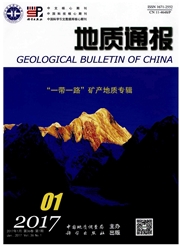

 中文摘要:
中文摘要:
2005年相对于20世纪70年代,鲁北平原开采机井数由9.29万眼增至28.76万眼.浅层水、深层水开采量分别增加了近2倍和3.76倍。长期超量开采和不合理的开采布局,使地下水水位持续下降、含水层疏干体积不断增加、地下水位降落漏斗持续扩展.并产生地面沉降、成水入侵等环境地质问题。采取农业节水、调整工业开采强度布局、加强浅层水均衡开发利用、地表水与地下水联合调蓄、本地劣质水资源化、保护和涵养深层地下水资源等举措,修复和涵养鲁北平原超采区的深层地下水系统势在必行。
 英文摘要:
英文摘要:
In 2005 the number of pumping wells increased to 287600 from 92900 in the 1970s, the amount of shallow unconfined groundwater exploitation increased nearly twice and the amount of deep confined groundwater exploitation increased 3.76 times in the Lubei plain. Because of a long time of overexploitation and irrational exploitation layout, the groundwater table kept lowering, the v'olume of aquifer draining increased progressively and the cones of groundwater depression expanded steadily; thus environmental geological problems such as land subsidence and salt invasion occurred. Under the circumstances, it is imperative to take such countermeasures as saving water for agricultural uses, adjusting the layout of exploitation intensity, enhancing balanced exploitation of unconfined groundwater, adjusting the combined regulation and storage of surface water and groundwater, making local poor-quality water useful and protecting the deep confined groundwater resources to restore and protect the deep confined groundwater system in overexploitation areas in the Lubei plain.
 同期刊论文项目
同期刊论文项目
 同项目期刊论文
同项目期刊论文
 期刊信息
期刊信息
